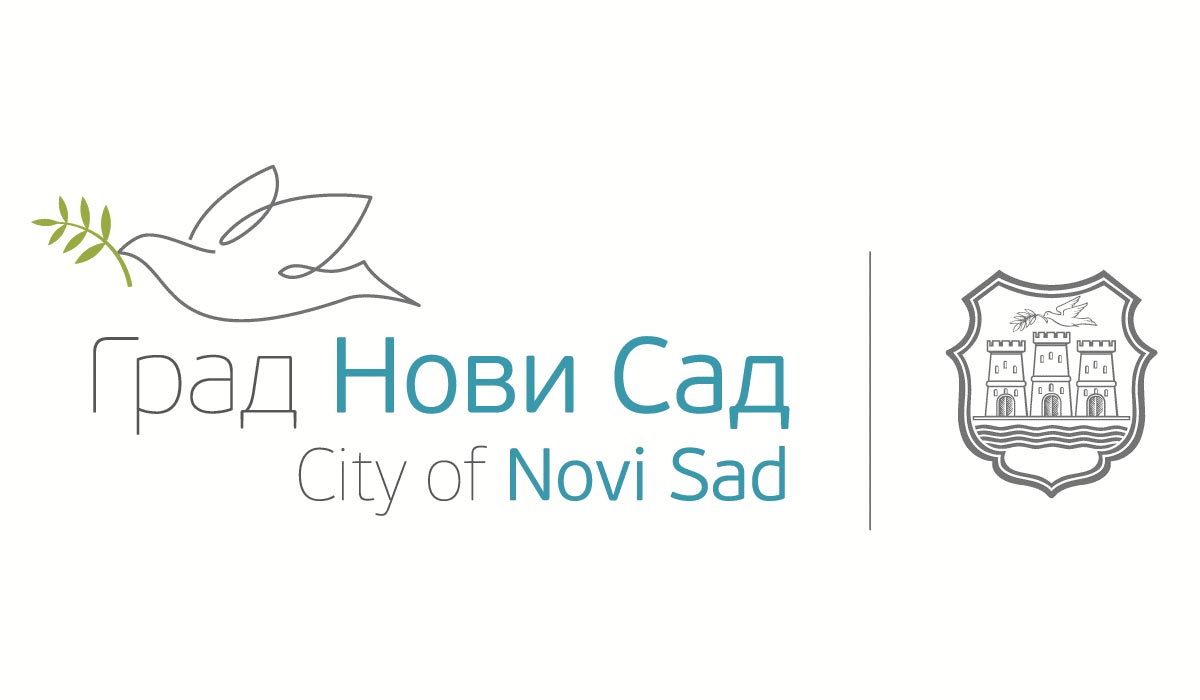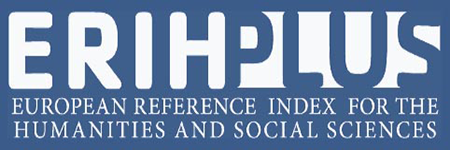THE VAMPIRLIJA HILL IN THE VILLAGE OF MIJAJLOVAC (TRSTENIK): A POSSIBLE LOCATION FOR THE BIRTHPLACE OF EUROPEAN ‘VAMPIROLOGY’
DOI:
https://doi.org/10.19090/i.2021.32.116-132Keywords:
Arnold Paole, Medveđa, Levač, District of Jagodina, Kingdom of Serbia (1718–1739), Habsburg empire, necropolis, 18th century archaeologyAbstract
Vampires gained worldwide popularity due to the classic novel about the most famous one, Dracula, written by Bram Stoker in 1897. Bram Stoker’s Dracula has very little in common with his inspiration, the fifteenth-century Wallachian ruler Vlad III (1431‒1476), who was a real historical figure. However, some strange events involving the dead seem to have occurred in Southwest of Transylvania a few centuries after the Wallachian prince’s death. In some parts of the Habsburg Kingdom of Serbia (1718‒1739), the local Austrian authorities recorded some cases of ‘vampirism’, which Europe would be introduced to shortly afterward, along with this newly accepted word. This paper will present historical facts about one particular case recorded at the southernmost border of the Habsburg Empire, which at the time was the West Morava River. It was the case of a ‘vampire’ named Arnold Paole, who died in 1726/7 in the border village of Medveđa and whose case ‘infected’ the whole Europe with the ‘virus’ of ‘vampiromania’. The main goal of the paper is to locate the spot where one of the first ‘vampire slayings’ ever recorded could have taken place, and to direct further investigations within early modern age archaeology.
Downloads
References
Anon. ‘Beitrag zur Geschichte des Aberglaubens. Beschreibung des eigentlichen Verlaufs, welcher sich Ao. 1725 in dem Königreich Servien, und zwar den 6ten Apr. in dem Cracoiwazischen District mit den so genannten Wampyren zugetragen’, Der neue Deutsche Zuschauer 7, Den 28. April, 1791, Zürich: Orell, Geßner, Füeßli, 1791, 326–329.
Frombald. ‘Copia eines Schreibens aus dem Gradisker District’, Wienerisches Diarium vom 21. Juli 1725 Kayserliche Hof-Buchdruckerey, Wien, 1725, 11–12.
Glaseri, J. F. ‘Ex Litteris’, Commercium Literarium ad Rei Medicae et Scientiae Naturalis Incermentum quo Ovicquid Novissime Observatum Agitatum Scriptum vel Peractum est Succincte Dilucideque Exponitur. Annus MDCCXXXII, Norimbergae: Sumptibus Societatis, 1732, 82–84.
Grujić, R. ‘Prilozi za istoriju Srbije u doba austrijske okupacije (1718–1739)’, Spomenik SKA LII, Beograd: Srpska kraljevska akademija, 1914, 84-196. (Serbian Cyrillic)
Hofkammerarchiv, Wien, Hoffinanz Ungarn, Rote Nummer 654 (HKA, Wien)
fol. 1134–1136. Bericht des Cantagions-Medicus Glaser an die Jagodiner Kommandantur (nach dem 12.12.1731.).
fol. 1138–1140. Visum et Repertum Über die sogenannten Vampyrs oder Blutsauger so zu Medvegya in Servien an Türkhischen Gränz den 7 Januarii 1732 geschehen.
Mitrović, M. ‘Podaci o Srbiji u protokolima Dvorskog ratnog saveta u Beču (1717–1740)’, u: S. Gavrilović (ur.), Spomenik Odeljenja istorijskih nauka CXXX, Beograd: SANU, 1988, 7-384. (Serbian Cyrillic)
Novaković, S. (izd.) Zakonik Stefana Dušana cara srpskog 1349. i 1354, Beograd: Zadužbina Ilije M. Kolarca, 1898. (Serbian Cyrillic)
‘Popis stanovništva, domaćinstava i stanova 2011. u Republici Srbiji’, Uporedni pregled broja stanovnika 1948, 1953, 1961, 1971, 1981, 1991, 2002. i 2011. Podaci po naseljima, Beograd: Republički zavod za statistiku, 2011. (Serbian Cyrillic)
Rajković, Đ. (saopš.), ‘Srpski narodni sabor meseca maja 1730. u Beogradu I. Beleške’, Letopis Matice srpske 113, Novi Sad: Matica Srpska, 1872, 294–309. (Serbian Cyrillic)
Topografska karta 1:25000, Kruševac 3–1 (Medveđa), Beograd: Vojnogeografski institut.
Topografska karta 1:25000, Požarevac 3–3 (Osipaonica), Beograd: Vojnogeografski institut.
Vujić, J. Putešestvije po Serbiji, prva knjiga, Beograd: Srpska književna zadruga, 1901. (Serbian Cyrillic)
______. Putešestvije po Serbiji, druga knjiga, Beograd: Srpska književna zadruga, 1902. (Serbian Cyrillic)
Weingartner, J. Theatre de la Guerre dans le Royaume de Servie en Originale, Vienne: Aug: Ferd: Heckenauer, 1738.
Yüzbaşioğlu et al. (eds.) MAD 506 Numarali Semendire Livâsi Icmâl Tahrir Defteri (937/1530) - Dizin ve Tıpkıbasım, Defter-i Hâkânî Dizisi: XIV, Ankara: T.C. Basbakanlik Devlet Arsivleri Genel Müdürlügü, 2009.
References:
András, K. ‘A parasztság hétkoznapi élete a kőzépkori Magyarországon’, A Veszprém megyei múzeumok közleményei 17, Veszprém, 1984, 221–231.
Anon. Acten-mäßige und Umständliche Relation von denen Vampiren oder Menschen-Saugern, welche sich in diesem und vorigen Jahren, im Königreich Servien, herfür gethan. Nebst einem Raisonnement darüber und einen Hand=Schreiben eines Officiers, des Prinz=Alexandrischen Regiments, aus Medvedia in Servie, Leipzig: Augusto Martini, 1732a.
Anon. ‘Wampirs, fait singulier et des plus extraordinaires, s’il est vrai,’ Mercure de France, May 1732, Paris, 1732b, 890–898.
Anon. ‘Courtes reflexions physiques sur le vampirisme’, Le Glaneur historique, moral, littéraire, galant et calottin III, A La Haye, 1733, 275–276.
Azinović Bebek, A. and Janeš, A. ‘Groblje oko crkve sv. Nikole biskupa u Žumberku’, u: S. Krznar et al. (ur.) Groblja i pogrebni običaji u srednjem i ranom novom vijeku na prostoru sjeverne Hrvatske. Zbornik radova prvog međunarodnog znanstvenog skupa srednjovjekovne arheologije Instituta za arheologiju. Zagreb, 4. lipnja 2014, Zagreb: Institut za arheologiju, 2016, 123–139.
Babić, S. Tvorba riječi u hrvatskom književnom jeziku, Nacrt za gramatiku. Zagreb, 1986.
Barrowclough, D. The Malkin Tower, a Seventeenth‒Century Witches Coven Discovered? The Archaeological and Historical Evidence Behind the British Witch Trails of 1612 Considered, Cambridge: Red Dagger Press, 2012, 1–21.
______. Time to Slay Vampire Burials? The Archaeological and Historical Evidence for Vampires in Europe. First published: 19.10.2014, Cambridge: Red Dagger Press, 2014a, 1‒10.
______. ‘The Wonderful Discovery of Witches’ Unearthing the Occult: Necromancy and Magic in Seventeenth-Century England, Cambridge, 2014b, 1–12.
Barrowclough, D. and Hallam, J. ‘The Devil’s Footprints and Other Folklore: Local Legend and Archaeological Evidence in Lancashire’, Folklore 119 (April 2008), London, 2008, 93‒102.
Betsinger, T. K. and Scott, A. B. ‘Govering from the Grave: Vampire Burials and Social Order in Post-Medieval Poland’, Cambridge Archaeological Journal 24 (3), Cambridge, 2014, 467–476.
Bräunlein, P. J. ‘Furchterregende Randzonen der Aufklärung: Skandalon Vampirismus“, Zeitschrift für Anomalistik 15, Freiburg im Breisgau, 2015, 55–87.
Bušetić, T. ‘Levač’, u: J. Cvijić (ur.) Srpski etnografski zbornik, knjiga peta. Naselja srpskih zemalja II, Beograd: Srpska kraljevska akademija, 1903, 461–511. (Serbian Cyrillic)
Costa Santos, L. D. et al. ‘Medical explanations for the myth of vampirism’, Revista Medica de Minas Gerais 23(4), 2013, 510–514.
Čoralić, L. Dugac, Ž. and Sardelić, S. ‘Vampires in Dalmatia: The Example of Žrnovo on the Island of Korčula in the Eighteen Century’, Review of Croatian History Vol. IX/1, Zagreb, 2014, 61–76.
Đorđević, M. ‘Kraljevstvo Srbija 1720–1739’, Doktorska disertacija, Niš: Filozofski fakultet, Univerzitet u Nišu, 2013. (Serbian Cyrillic)
Đorđević, M. and Miltojević, M. ‘Prevencija habzburških vlasti od širenja zaraznih bolesti u Srbiji u prvoj polovini XVIII veka’, Teme 4, Niš, 2014, 1611–1626. (Serbian Cyrillic)
Gavrilović, S. ‘Ka srpskoj revoluciji’, u: S. Gavrilović (ur.) Istorija srpskog naroda 4–1, Beograd: Srpska književna zadruga, 1986, 351–431. (Serbian Cyrillic)
Gavrilović, V. ‘Podaci iz 1737. o narodnoj miliciji u Kraljevini Srbiji’, Istorijski časopis XLVII, Beograd, 2000, 249–262. (Serbian Cyrillic)
Grenz, R. ‘Archäologische Vampirbefunde aus dem westslawischen Siedlungsgebiet’, Zeitschrift für Ostforschung 16, Marburg, 1967, 255–265.
Gusar, K. ‘Jokina glavica – ranosrednjovjekovni grobovi’, u: B. Marijanović (ur.) Tumuli iz Krneze i Podvršja kod Zadra (Tumuli from Krneza and Podvršje near Zadar), Zadar: Sveučilište u Zadru, 2012, 49–83.
Hanuliak, M. ‘Vampirismus auf Gräberfeldern von der Wende des Früh- zum Hochmittelalter’, Ethnographisch-Archäologische Zeitschrift 40, Leipzig, 1999, 577–585.
Hutterer, H. ‘Vampire in Nordserbien’, u: M. Follner and S. Seitschek (eds.) 300 Jahre Karl VI. (1711-1740). Spuren der Herrschaft des ‘letzten’ Habsburgers, hrsg. von der Generaldirektion des Österreichischen Staatsarchivs, Wien: Österreichisches Staatsarchiv, 2011, 126–135.
Katić, T. and Amedoski, D. ‘Karavandžije nahije Petruš iz Levča 1502. godine’, Mešovita građa XXXVIII, Beograd, 2017, 7–25. (Serbian Cyrillic)
Klajn, I. Tvorba reči u savremenom srpskom jeziku. Drugi deo – Sufiksacija i konverzija, Beograd, 2003. (Serbian Cyrillic)
Klaniczay, D. ‘Decline of Witches and Rise of Vampires in 18th Century Habsburg Monarchy’, u: D. Oldridge (ed.) The Witchcraft Reader, London and New York: Routledge, 2002, 165–180.
Kleut, M. ‘Komentari’, u: P. V. Arbutina (ur.) Vampiri u Srbiji u XVIII veku. Knjiga i komentari, Beograd: Službeni glasnik, 2018, 37–73. (Serbian Cyrillic)
Koperkiewicz, A. ‘Holy or Cursed? Some Reflections on Anomalies in Early Medieval Burials’, Folia Archaeologica Balkanica III, Skopje, 2015, 491–505.
Korać, M. and Golubović, S. Viminacium – Više grobalja 2, Beograd: Arheološki institut, 2009.
Krumphanzlová, Z. ‘K otázce vampyrismu na slovanských pohřebištích’, Památky archeologické 52 (2), Praha, 1961, 544–549.
______. ‘Der Ritus der slawischen Skelettfriedhöfe der mittleren und jüngeren Burgwallzeit in Böhmen’, Památky archeologické 57 (1), Praha, 1966, 277–327.
Krznar, S. and Bedić, Ž. ‘Neuobičajeni ritus pokopavanja u srednjem i ranom novom vijeku na prostoru sjeverne Hrvatske’, u: S. Krznar et al. (ur.) Groblja i pogrebni običaji u srednjem i ranom novom vijeku na prostoru sjeverne Hrvatske. Zbornik radova prvog međunarodnog znanstvenog skupa srednjovjekovne arheologije Instituta za arheologiju. Zagreb, 4. lipnja 2014, Zagreb: Institut za arheologiju, 2016, 203–220.
Langer, J. ‘Serbien unter der kaiserlichen Regierung 1717-1739’, Mittheilungen des k. k. Kriegsarchivs, neue folge III, Wien, 1889, 155–247.
Leszek, G. and Kajkowski, K. ‘Vampires, criminals or slaves? Reinterpreting “deviant burials’ in early medieval Poland’, World archaeology 45 (5), Abingdon-on-Thames, 2013, 780–796.
Maas, R. and Voets, P. ‘The vampire in medical perspective: myth or malady?’, QJM: An International Journal of Medicine 107(11), Oxford, 2014, 945–946.
Marjanović-Vujović, G. Trnjane, srpska nekropola (kraj XI - početak XIII veka), Beograd: Narodni muzej Beograd, 1984. (Serbian Cyrillic)
______. ‘Burial Rite in the Necropolises of 11th–12th Century in the Territory of Serbia’, Balcanoslavica 9, Prilep, 1986, 65–69.
Mezes, Á. Insecure Boundaries. Medical experts and the returning dead on the Southern Habsburg borderland. M.A. thesis, Budapest: Central European University, History Department, 2013.
______. ‘Georg Tallar and the 1753 Vampire Hunt: Administration, Medicine and the Returning Dead in the Habsburg Banat’. u: E. Pócz (ed.) The Magical and Sacred Medical World, Newcastle upon Tyne: Cambridge Scholars Publishing, 2019, 93–136.
Mihailović, V. Na granicama Balkana – L. F. Marsilji i rimska baština (1683-1701), Beograd: Balkanološki institut SANU, 2018. (Serbian Cyrillic)
Mikavica, D. et al. Srbi u Habzburškoj monarhiji od 1526. do 1918. 1 (Od Mohačke bitke do Blagoveštenskog sabora 1526–1862), Novi Sad: Prometej, 2016. (Serbian Cyrillic)
Mirković-Marić, N. ‘Lokalitet Humka, srednjovekovna nekropola u selu Radljevo, na trasi PK Tamnava Zapadno polje’, u: V. Filipović, R. Arsić and D. Antonović (ur.), Rezultati novih arheoloških istraživanja u severozapadnoj Srbiji i susednim teritorijama, Beograd-Valjevo: Srpsko arheološko društvo, Zavod za zaštitu spomenika kulture Valjevo, 2013, 249–257. (Serbian Cyrillic)
Mišković, J. ‘Topografski rečnik Jagodinskog okruga’, Glasnik Srpskoga učenog društva 61, Beograd, 1885, 1–204. (Serbian Cyrillic)
Nowosadtko, J. ‘Der ‘Vampyris Serviensis“ und sein Habitat: Impressionen von der österreichischen Militärgrenze’, Militär und Gesellschaft in der Frühen Neuzeit 8(2), Potsdam, 2004, 151-167.
Pantelić, D. ‘Vojno-geografski opisi Srbije pred Kočinu krajinu od 1783. i 1784. godine’, Spomenik SKA LXXXII, Drugi razred 64, Beograd: Srpska kraljevska akademija, 1936. (Serbian Cyrillic)
Pavlović, M. Vojno administrativno uređenje Smederevskog sandžaka 1739–1788, Doktorska disertacija, Novi Sad: Univerzitet u Novom Sadu, Filozofski fakultet, Odsek za istoriju, 2016. (Serbian Cyrillic)
Pecinjački, S. ‘Podaci o uređenju srbijanske milicije u 1728/29. godini’, Zbornik radova Narodnog muzeja Čačak 7, Čačak, 1976, 149–186. (Serbian Cyrillic)
______. ‘Raspored domaće milicije austrijske Kraljevine Srbije u 1725. godini’, Zbornik radova Narodnog muzeja Čačak 8, Čačak, 1977, 37–59. (Serbian Cyrillic)
Pešikan, M. ‘O građenju imena stanovnika u odnosu na imena zemalja i mesta’, Naš jezik - nova serija, knj. IX, sv. 3–4, Beograd, 1958, 196–205. (Serbian Cyrillic)
Petković, S. and Ružić, M. ‘Roman necropolis’, u: S. Petković et al. (eds.), Roman and Medieval Necropolis in Ravna near Knjaževac, Belgrade: Archaeological institute, 2005, 23–176.
Pohl, J. C. Dissertationem De Hominibus Post Mortem Sanguisugis, Vulgo Sic Dictis Vampyren, Auctoritate Inclyti Philosophorum Ordinis, Publico Eruditorum Examini Die XXX. Aug. An. MDCCXXXII. Submittent M. Io. Christophorus Pohlius, Lignicens. Silesius Et Io. Gottlob Hertelius, Philos. Et Med. Stud, Lipsiae: Langenheim, 1732.
Popović, D. Srbija i Beograd od Požarevačkog do Beogradskog mira (1718–1739), Beograd: Srpska književna zadruga, 1950. (Serbian Cyrillic)
______. Velika seoba Srba, Beograd: Srpska književna zadruga, 1954. (Serbian Cyrillic)
Porter, R. ‘Witchcraft and magic in Enlightenment, Romantic and Liberal thought’, u: B. Ankarloo and S. Clark (eds.), Witchcraft and magic in Europe. The Eighteenth and Nineteenth centuries, London: The Athlone, 1999, 191–282.
Radić, P. ‘Sufiks –lija u građenju imena stanovnika od imena mesta ili oblasti’, Južnoslovenski filolog LV, Beograd, 1999, 47–66. (Serbian Cyrillic)
______. Turski sufiksi u srpskom jeziku (sa osvrtom na stanje u makedonskom i bugarskom), Beograd: Institut za srpski jezik SANU, 2001. (Serbian Cyrillic)
Radosavljević, N. ‘Valjevska episkopija u ‘Izvešteniju’ iz 1735. godine’, Glasnik Istorijskog arhiva Valjevo 31, Valjevo, 1977, 37–44. (Serbian Cyrillic)
Ranfts, M. Tractat von dem Kauen und Schmatzen der Todten in Gräbern, worin die wahre Beschaffenheit derer Hungarischen Vampyrs und Blut-Sauger gezeigt, auch alle von dieser Materie bißher zum Vorschein gekommene Schrifften recensiret werden, Leipzig: Taubner, 1734.
Rangochev, K. and Hadzhiangelov, V. ‘Gradǎt. ‘Nepravilnite mǎrtǎvci’ prez XІІ–XІX vek. (Po materiali ot grad Samokov i Samokovsko)’, Elektronno spisanie ‘Ongǎl“. Meždunarodno referirano spisanie za etnologija, medievistika i arheologija. God. IV, 2012, br. 4, 2012, 163–172. (Bulgarian Cyrillic)
Rašković, D. and Berić, N. ‘Rezultati rekognosciranja antičkih i srednjovekovnih nalazišta trsteničke opštine i susednih oblasti’, Glasnik Srpskog arheološkog društva 18, Beograd, 2002, 137–156. (Serbian Cyrillic)
Simonović, Đ. Levač – teritorija i naselja od kraja XII do početka XX veka, Rekovac-Beograd: Zavičajni klub Levčana, 1983. (Serbian Cyrillic)
Szabó, J. G. ‘Honfoglaláskori sirok Eger-Répástetőn’, EMÉ 2, Eger, 1964, 105–139.
Tiziani, M. ‘Vampires and vampirism: pathological roots of a myth’, Antrocom 5/2, 2009, 133–137.
Todorova, M. Imaginarni Balkan, Beograd: Biblioteka XX vek, 1999.
Trbojević, D. ‘Analiza pozitivnog i negativnog odnosa prema ekonomskom potencijalu geografske, istorijske i identitetske povezanosti sa motivom vampira u Srbiji’, Antropologija 15, sv. 1, Beograd, 2015, 93–128. (Serbian Cyrillic)
Vermeir, K. ‘Vampires as Creatures of the Imagination: Theories of Body, Soul, and Imagination in Early Modern Vampire Tracts (1659–1755)’, u: Y. Haskell (ed.) Diseases of the Imagination and Imaginary Disease in the Early Modern Period, Turnhout: Brepols, 2012, 341–373.
Veselinović, R. ‘Srbija pod austrijskom vlašću 1718–1739’, u: S. Gavrilović (ur.), Istorija srpskog naroda 4-1, Beograd: Srpska književna zadruga, 1986, 106-162. (Serbian Cyrillic)
Warnke, D. ‘Eine ‘Vampir‒Bestattung’ aus dem frühgeschichtlichen Hügelgräberfeld in den ‘Schwarzen Bergen’ bei Ralswiek auf Rügen’, Ausgrabungen und Funde 27, Berlin, 1982, 113-117.
Zopf, J. H. Dissertatio de Vampyris serviensibus quam supremi numinis auspicio praeside M. Ioanne Henr. Zopfio gymnasii assindiensis directore publice defendet respondens Christianus Fridericus Van Dalen Emmericensis in Acroaterio Maiori ad diem [ ] Martii 1733 horis antemeridianis, Duisburgi ad Rhenum: Johhanis Sas, Academiae Typographi, 1733.









